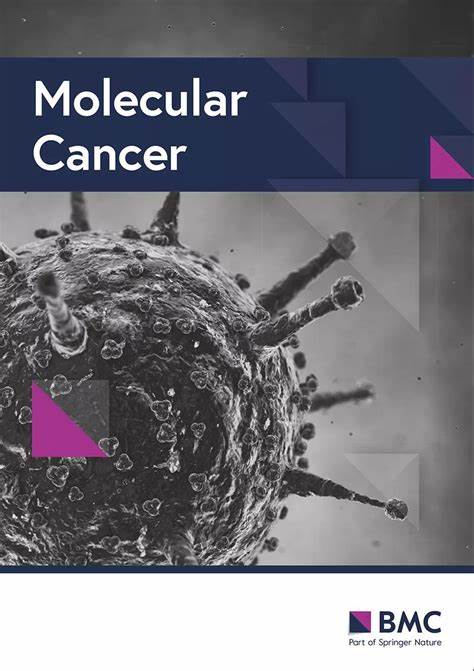死亡视觉:细胞弹性和癌症治疗抵抗之间的联系
IF 27.7
1区 医学
Q1 BIOCHEMISTRY & MOLECULAR BIOLOGY
引用次数: 0
摘要
战胜晚期肿瘤的关键挑战之一是癌细胞逃避化疗、靶向治疗、免疫治疗和细胞治疗施加的选择压力的能力。遗传和表观遗传的改变都有助于耐药性的发展,使癌细胞在最初有效的治疗中存活下来。在这篇文章中,我们探讨了遗传和表观遗传调控机制如何影响肿瘤细胞的状态及其对不同治疗策略的反应。我们进一步提出,细胞生长和细胞死亡之间的平衡改变是耐药性的基本驱动因素。细胞死亡程序以各种形式存在,受细胞类型、触发因素和微环境条件的影响。这些过程受时间和空间的限制,似乎比以前所理解的更加异构。为了捕捉死亡诱导信号和生存机制之间复杂的相互作用,我们引入了死亡视觉的概念。这个框架强调了细胞死亡调控的动态性质,决定了特定的癌细胞克隆是否逃避或屈服于治疗。在这一认识的基础上,提供了对抗耐药克隆和提高治疗效果的有希望的策略。例如,将DNMT抑制剂与免疫检查点阻断结合可以抵消yap1驱动的耐药,或者使用转录CDK抑制剂可以预防或克服化疗耐药。death - vision旨在提供对细胞死亡程序的多样性和进化的更深入的了解,不仅在诊断方面,而且在整个疾病进展和治疗适应方面。本文章由计算机程序翻译,如有差异,请以英文原文为准。
Death-ision: the link between cellular resilience and cancer resistance to treatments
One of the key challenges in defeating advanced tumors is the ability of cancer cells to evade the selective pressure imposed by chemotherapy, targeted therapies, immunotherapy and cellular therapies. Both genetic and epigenetic alterations contribute to the development of resistance, allowing cancer cells to survive initially effective treatments. In this narration, we explore how genetic and epigenetic regulatory mechanisms influence the state of tumor cells and their responsiveness to different therapeutic strategies. We further propose that an altered balance between cell growth and cell death is a fundamental driver of drug resistance. Cell death programs exist in various forms, shaped by cell type, triggering factors, and microenvironmental conditions. These processes are governed by temporal and spatial constraints and appear to be more heterogeneous than previously understood. To capture the intricate interplay between death-inducing signals and survival mechanisms, we introduce the concept of Death-ision. This framework highlights the dynamic nature of cell death regulation, determining whether specific cancer cell clones evade or succumb to therapy. Building on this understanding offers promising strategies to counteract resistant clones and enhance therapeutic efficacy. For instance, combining DNMT inhibitors with immune checkpoint blockade may counteract YAP1-driven resistance or the use of transcriptional CDK inhibitors could prevent or overcome chemotherapy resistance. Death-ision aims to provide a deeper understanding of the diversity and evolution of cell death programs, not only at diagnosis but also throughout disease progression and treatment adaptation.
求助全文
通过发布文献求助,成功后即可免费获取论文全文。
去求助
来源期刊

Molecular Cancer
医学-生化与分子生物学
CiteScore
54.90
自引率
2.70%
发文量
224
审稿时长
2 months
期刊介绍:
Molecular Cancer is a platform that encourages the exchange of ideas and discoveries in the field of cancer research, particularly focusing on the molecular aspects. Our goal is to facilitate discussions and provide insights into various areas of cancer and related biomedical science. We welcome articles from basic, translational, and clinical research that contribute to the advancement of understanding, prevention, diagnosis, and treatment of cancer.
The scope of topics covered in Molecular Cancer is diverse and inclusive. These include, but are not limited to, cell and tumor biology, angiogenesis, utilizing animal models, understanding metastasis, exploring cancer antigens and the immune response, investigating cellular signaling and molecular biology, examining epidemiology, genetic and molecular profiling of cancer, identifying molecular targets, studying cancer stem cells, exploring DNA damage and repair mechanisms, analyzing cell cycle regulation, investigating apoptosis, exploring molecular virology, and evaluating vaccine and antibody-based cancer therapies.
Molecular Cancer serves as an important platform for sharing exciting discoveries in cancer-related research. It offers an unparalleled opportunity to communicate information to both specialists and the general public. The online presence of Molecular Cancer enables immediate publication of accepted articles and facilitates the presentation of large datasets and supplementary information. This ensures that new research is efficiently and rapidly disseminated to the scientific community.
 求助内容:
求助内容: 应助结果提醒方式:
应助结果提醒方式:


